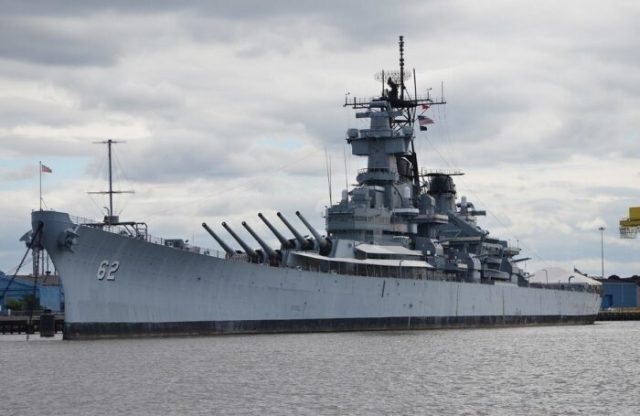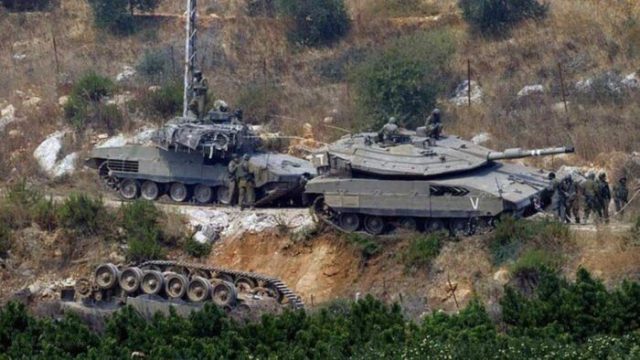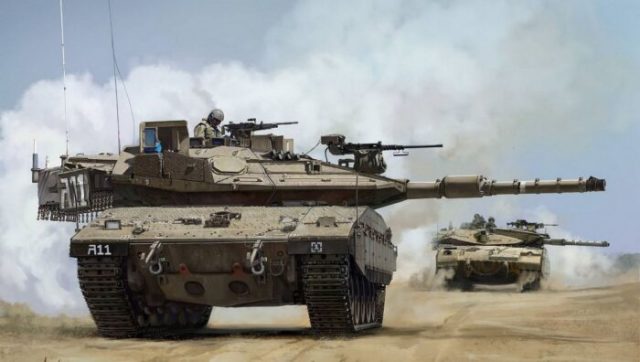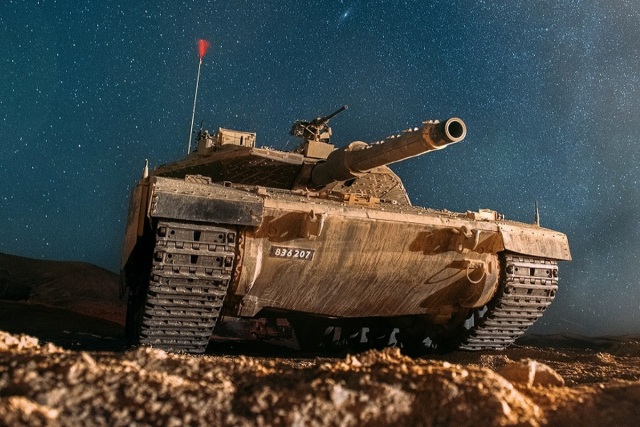This article argues that the full significance of the ongoing electronic revolution in land wars has yet to be fully realized. This revolution has already led to far-reaching changes in air and sea warfare, and now it is having a similar impact on land warfare. Heavy armor and kinetic weapons are becoming less important, they are being replaced by electronic systems and counter–systems – both offensive and defensive - for detection, attack and defeat.
In this regard, the author of the proposed article believes that the war in Ukraine gives little more than a partial idea of the future. Although electronically controlled munitions are used there with great efficiency, electronic interception and destruction systems are still lacking. Israeli active protection systems "Trophy" (Trophy, "Windbreaker") and "Iron Fist" (Iron Fist, "Iron Fist") are prime examples of such systems. Consequently, there is a need for a revolution in the design of the tank and other combat vehicles, as well as far–reaching changes in the structure of military formations - in Israel and elsewhere.

Professor Azar GAT
The author – Professor Azar Gat (Azar Gat) heads the Department of National Security named after Ezer Weizmann at the School of Political Science, Public Administration and International Relations at Tel Aviv University. He is the Head of the International Master's Program in Diplomacy and Security at Tel Aviv University and the winner of the 2019 EMET Prize in Political Science and Security.
The future of the tank and the land battlefield
Especially after the start of the war in Ukraine, we have heard a lot about new technologies that have revolutionized the conduct of hostilities: drones of all types and sizes – armed, barraging and self-destructing; artificial intelligence and big data; cybernetics; automation and robotics. All of this is familiar enough. And yet it is unclear whether the full meaning of the revolution in the formation of armed forces and weapons systems in a land war is obvious. The term "revolution in military affairs", introduced by 1980, says nothing about the causes and nature of this revolution. This article offers a broad historical and conceptual context for describing new developments and outlines their likely practical consequences.
Humanity is experiencing the third industrial and technological revolution - after the steam and iron revolution of the 19th century and the revolution caused mainly by the internal combustion engine in the first half of the 20th century, both of which also profoundly influenced the conduct of war. Some call the changes we are experiencing today the Fourth Industrial Revolution, but all the changes mentioned above are the result of the same fundamental technology that has been developing since the mid-20th century: the exponential growth of electronic computing power.
Notice how this technological revolution has changed naval and air warfare. At sea, heavily armored large ships have left the arena of hostilities, and in the offensive, military operations are conducted with the help of electronically controlled missiles, and in defense – with the help of disruption of electronic systems and interception. Similarly, air warfare, once based on the kinetic capabilities of aircraft and their weapons, now relies mainly on electronically controlled weapons and electronic defense systems. Both at sea and in the air, victory now depends on who is one step ahead of their opponents in these most important technical and tactical areas.

Electronic revolution in naval and air warfare
The environment in which land combat operations take place is immeasurably more complex than sea and air, both because of the number of combatants involved in them, and because of the complex topographic features of the land. But at least since the early 1980s, the direction has been clear to those who understood the broader context. The revolution that the land war is undergoing is no less profound and far-reaching than the revolution in mechanization and the appearance of the tank and other combat vehicles. It was J. F. C. Fuller, the leading pioneer theorist of mechanized warfare, who firmly placed the mechanization revolution in war in the context of the Second Industrial Revolution and thereby helped people understand its full significance and scope. Incredibly, back in 1928, he looked far ahead, predicting that the third revolutionary wave of the future, which would define the war, as well as all other spheres of life, would be "electric and robotic" (the word "electronic" did not exist then).
Let's focus on the tank, the product of the second mechanization revolution and the backbone of land wars for about a hundred years. Since the Second World War, tanks have been optimized, first of all, to fight other tanks, and secondly, to protect against shaped charges. Their main armament is a high–speed cannon firing kinetic projectiles. Half of their 60-70-ton weight in most armies falls on heavy armor, which, in turn, requires a 1500 hp engine.

US Navy battleship of the Second World War
However, the tanks will no longer be at a direct firing distance from each other, they will be detected and attacked from much greater distances. This is no different from the situation with the mighty battleships of the Pacific Theater of World War II, which never came within shooting distance of each other. New gun ammunition adapted to new forms of warfare, as well as setting up a tank gun to launch guided missiles, are just intermediate solutions that bypass the question of what the current usefulness of the heaviest kinetic cannon is.
The tank's heavy armor has also reached the limit of its ability to withstand high-precision ammunition with a tandem shaped charge of the "shot-forgot" type, which are aimed at the top of the tank. The mass destruction of the unfortunate Armenian army in the 2020 war against Azerbaijan, like a stuck and persecuted Russian convoy on its way to Kiev, clearly demonstrates the current reality.
The same can be said about the hasty retreat from Wadi Saluki of Merkava Mark 4 tanks from the 401st Brigade of the Israeli army during the Second Lebanon War (2006), when they encountered Russian second-generation anti-tank missiles "Kornet" fired by Hezbollah. Since then, third–generation anti-tank missiles "shot - forgot" have appeared, but advanced new defensive capabilities are also available to tanks.

Merkava tanks in the Second Lebanese War
This does not mean that the tank and other combat vehicles have become history. But the answer should not be sought in further strengthening of heavy armor or in improving tactical techniques, no matter how clumsy Russian tactics may turn out to be. Most likely, the answer lies in the full–scale adaptation of ground combat vehicles to the ongoing electronic revolution - first of all, in the adoption of active defense systems, such as the Israeli Trophy and Iron Fist, which are currently being purchased and installed by the armies of the United States, Germany and Great Britain.
Active defense means the electronic detection, destruction and interception of flying projectiles launched from land or from the air – the same revolution that sea and air combat operations have already undergone. Electronic systems designed to destroy UAVs – those that launch ammunition and kamikaze drones, singly or in a pack - are also at an advanced stage of development. This is the future.
Since such systems will become a ubiquitous standard – and it's only a matter of time (the development of the Russian Arena-M system has already been announced) – they will transform ground combat operations. The current reality, in which detection on a modern battlefield means almost guaranteed destruction, will no longer persist. The two-way game resumes. Thus, survival and success on the battlefield will depend on the question of which side has the last word in terms of offensive and defensive electronic systems and counter-systems of detection, attack and defeat. As in air and naval warfare in the electronic age, it can also be expected that when one side has a decisive advantage in these systems, we will see crushing, almost one-sided victories in a conventional land war.
This suggests that the war in Ukraine gives a one-sided and only partial view of the future. Although we still lack clear information, the slowly developing Ukrainian counteroffensive may experience difficulties similar to those previously faced by mechanized Russian troops, since modern tanks and infantry fighting vehicles supplied to Ukraine by the West do not have active protection systems. Despite their heavy armor and great sophistication, they can be just as vulnerable to modern electronically guided munitions as Russian models.
At the same time, electronically controlled projectiles are already widely and effectively used in the war in Ukraine, there is basically no electronic interception and detonation system. The stalemate in trench warfare, which has attracted so much attention – as if we have gone back a hundred years to the First World War – may be a consequence of this imbalance, since armored combat vehicles are paralyzed by the lack of effective active protection.

Merkava M4 tank with Trophy active protection system installed
The implications for the design of combat vehicles are likely to be even more far-reaching. Active protection systems are currently being installed on heavily armored combat vehicles as something additional, whereas in fact they are intended to replace heavy armor, the effectiveness of which has fallen sharply in any case. Thus, modern combat vehicles equipped with active protection systems are intermediate models that combine two eras – the old and the new. This is true both for the latest models of the American Abrams, the German Leopard, the British Challenger, and the Israeli Merkava. Heavy armor is no more necessary for ground combat vehicles than 350-400 mm steel armor of the past is necessary for warships today. In fact, this is a disadvantage.
Indeed, the use of electronic detection and interception systems can significantly reduce the armor of combat vehicles, which is necessary to protect against small arms, shrapnel and explosions. Thus, it is expected to reduce their weight to about 10-25 tons; a parallel reduction in the volume and weight of the engine; and a reorientation of the design to defensive and offensive systems with electronic control. I believe that it is in this direction that land warfare and ground weapons systems are developing in the electronically computerized age.
It is gratifying to note that the IDF is a pioneer in this field, as can be gleaned from open sources of information about the futuristic Carmel tank. It seems that there is no place for the Merkava M5 (Merkava Mark 5) in the Israeli armed forces. The Carmel, with its light armor, is armed with more than one large cannon designed to destroy tanks; rather, it has missiles and a small-caliber automatic cannon. It is completely surrounded by electronic control systems – offensive and defensive – and this is the future of tanks and armored fighting vehicles.

Sketch of the tank of the future according to the "Carmel" program
The significance of this revolution in terms of the structure of units and combat formations is no less far-reaching. And here open sources indicate that the IDF has already made significant changes: the number of tanks has been drastically reduced , innovative electronics have been introduced, efforts are being made to expand cooperation between various branches of the armed forces and "dimensions". On an experimental and semi-experimental basis, the army has formed integrated combat units for "multidimensional" combat in order to study the innovative structure of troops, weapons systems and military doctrines.
This is really a direction – without delving into complex technical and tactical issues. However, it is worth mentioning that there is no place for old-fashioned tank brigades in the modern army. All changes and adaptations in their structure and equipment, as well as the plan to use them as part of multidimensional combat units are necessary steps, but they are not enough. Combat groups are designed to adapt the basic structure of the formation to specific forms of warfare. But it is assumed that the basic structure itself provides an answer to the type of combat that can usually be expected.
In the past, it was quite clear how armored formations were used as the main element of maneuver warfare. But today there is no scenario in which tanks would be used in this way. The glorious legacy of these formations will have to be adapted to the new era. Both armored combat vehicles and the structure of units and formations will have to undergo a major modernization, in which all other elements of the electronic revolution will play a central role: communication, automation and, at the same time, cyber defense and cyber offensive.
According to the materials of the resource www.inss.org.il










